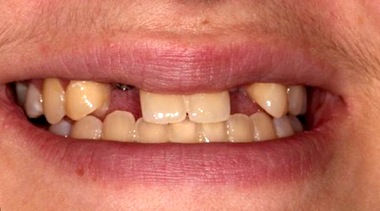 I would like to share something that happened to me recently in hopes you can avoid it happening to you. Several years ago I saw a patient for evaluation of congenitally missing maxillary lateral incisors.
I would like to share something that happened to me recently in hopes you can avoid it happening to you. Several years ago I saw a patient for evaluation of congenitally missing maxillary lateral incisors.
After my examination we discussed that to achieve the best results, orthodontics, implants and additional veneers would be needed. Furthermore, we recognized that close communication between all those involved would be vital to achieving the goals set.
After the exam and consultation it was clear to me that she was not committed to proceeding with treatment in my office. Just to be safe I spoke with both the pedodontist she desired to do any needed orthodontics, as well as the periodontist she wanted to use for implants.
When I spoke with these doctors I advised them both of my expectations if I was to be the restoring dentist and that I would need to do transitional bonding prior to completion of the orthodontics to ensure that the alignment and spacing was correct. I also informed them that I would need to be involved during the planning of the implant placement. As time went on it became evident that the patient had decided to seek her restorative treatment elsewhere.
Fast forward three years later and I found myself with this patient in front of me with orthodontics completed and off; but even worse, her implants were placed in spaces bigger than the central incisors. The shocker to me was I hadn't seen the patient even once during the prior three years and my first communication from either of the other treating doctors was from the periodontist after the implants were placed (via a mailed report to my office).
The good news is it appears we can still meet her current goals. Because of the discussion I had with her three years ago about what I expected from the specialists she wanted to use and the clear documentation that I also spoke with them, she wasn't upset with me. The bad news is the case could have turned out much better had the proper communication taken place as requested.
One of the lessons I've learned from this is to realize just how fortunate I am to normally work with others that value teamwork and communication. This experience also reminded me of a great quote from Dr. Gary DeWood: “The myth of communication is that it happens.”
The first time I heard him say this it made me laugh – but not this time.
John R. Carson, DDS, PC, Spear Visiting Faculty. [ www.johnrcarsondds.com ]
Comments
October 30th, 2012
October 30th, 2012